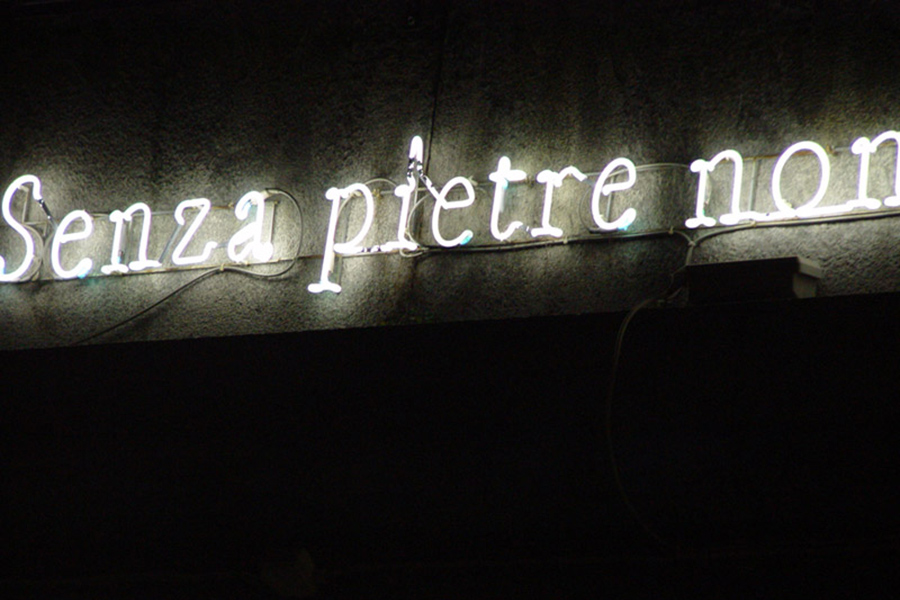The artist does not work with shapes and colour, but with meaning.
Joseph Kosuth
The neon lettering of Doppio passaggio (Double Passage) reproduces two excerpts from Invisible Cities by Italo Calvino and Thus Spoke Zarathustra by Friedrich Nietzsche. Of equal length and placed opposite each other, both texts develop the metaphor of the bridge as a vehicle of communication.
Joseph Kosuth (Toledo, Ohio, 1945) is one of the pioneers of conceptual art and has focused his research on language, questioning the very nature of art. The work that first gained him notoriety and challenged exhibition customs associated with the perception of art is One and Three Chairs, 1965, in which an actual chair is flanked by a photograph of it and a dictionary definition of the word “chair”.
Kosuth’s work is thus proposed as a semiotic investigation into the rules of representation and the relationship between concepts and the words used to express them, recording the shifts in meaning that every representation implies and often using tautology and quotations, as is the case with the Light in Turin, conceived for the Vittorio Emanuele I bridge.
Joseph Kosuth has participated in eight editions of the Venice Biennale, receiving an honourable mention in 1993, and in seven editions documenta in Kassel. His many awards include being appointed Chevalier de l’Ordre des Arts et des Lettres by the French government (1993), an Honorary Doctorate in Philosophy and Letters from the University of Bologna (2001), an Honorary Doctorate from the University of Havana (2015) and the Medal of Honour of the National Arts Club (2022). His works are in the collections of the world’s most important museums, including in New York, Boston, Melbourne, Moscow, London, Vienna and Paris.
From Calvino: “Marco Polo describes a bridge, stone by stone. But which is the stone that supports the bridge? Kublai Khan asks. The bridge is not supported by one stone or another, Marco answers, but by the line of the arch that they form. Kublai Khan remains silent, reflecting. Then he adds: Why do you speak to me of the stones? It is only the arch that matters to me. Polo answers: without stones there is no arch.”
From Nietzsche: “What is great in man is that he is a bridge and not a goal: what is lovable in man is that he is an over-going and a down-going. I love those that know not how to live except as down-goers, for they are the over-goers. I love the great despisers, because they are the great adorers, and arrows of longing for the other shore”.
Silvia Maria Sara Cammarata
Current Location
on restoration
Previous Locations
in 2001 on the Vittorio Emanuele I bridge between piazza Vittorio Veneto and piazza Gran Madre di Dio; from 2003 to 2012 at the Murazzi del Po and along Po Cadorna; from 2019 to the present on the Piazza Vittorio Veneto bridge.
Specifiche tecniche
Neon, support frames and DMX control system.



